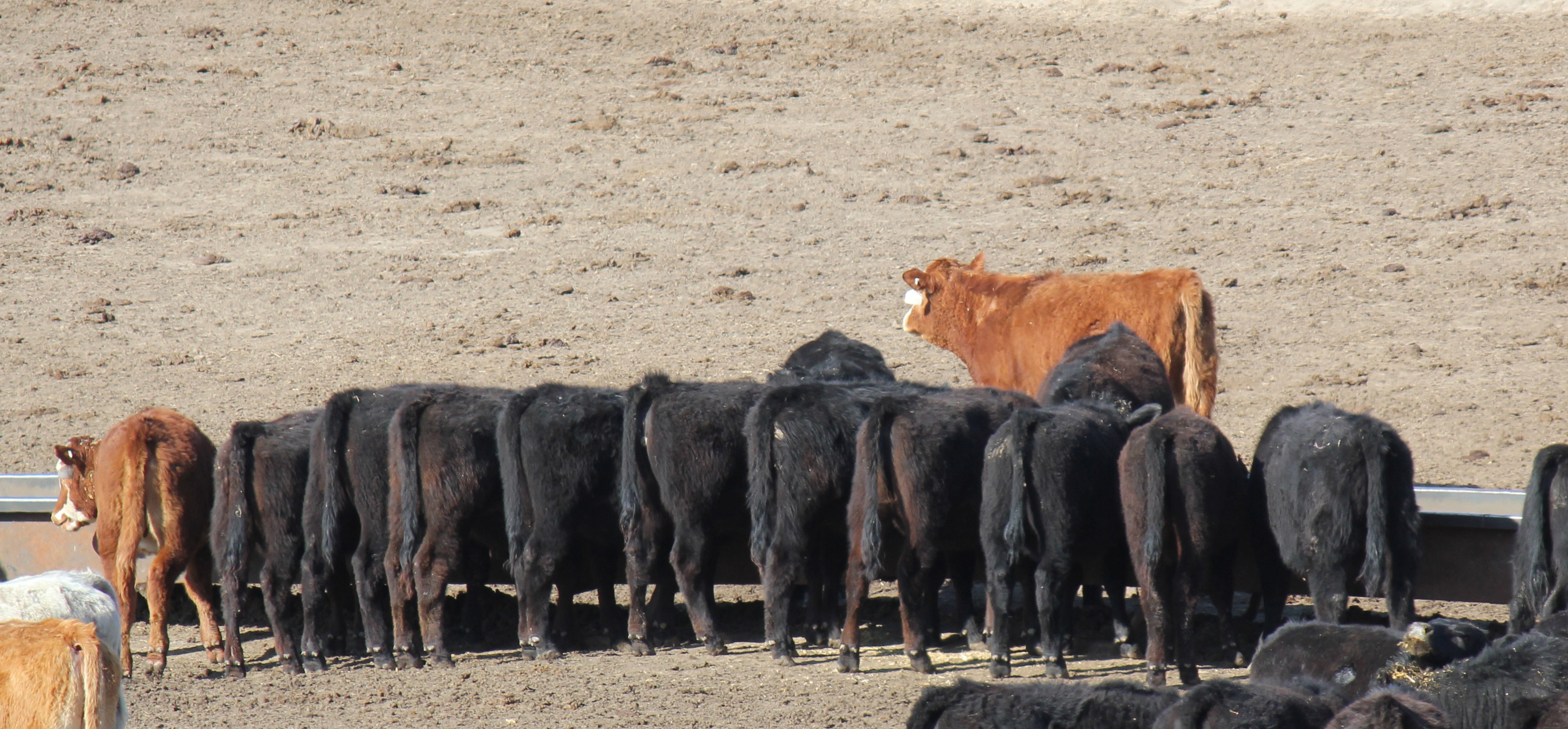
By Jordan Burhoop, Liesel Schneider, Curtis Bittner, Henry Hilscher, Jim MacDonald, Rodney Moxley, David Smith, and Galen Erickson
2017 NE Beef Report Article Summarized by Karla H. Jenkins, Cow/Calf, Range Management Specialist
Distillers grains are a common component in finishing diets in Nebraska. Their inclusion has resulted in improved performance while also improving cost of production. Recently, ethanol plants have been removing fiber components and corn oil, thus changing the composition of the available distillers grains. This research was conducted to evaluate the value of the fiber component in modified distillers grains plus solubles (MDGS) (50% dry matter) on finishing cattle performance, because if part of the fiber component is removed, it will be important to know if it should be replaced with fiber from some other source in the diet.
The study utilized 800 yearling steers with an initial weight of 915 pounds.
The five treatments included (Table 1 http://go.unl.edu/qzcx):
1) a dry rolled corn based control diet
2) a dry rolled corn based diet with 20% of the dry matter from MDGS
3) a dry rolled corn based diet with 40% of the dry matter from MDGS
4) a diet mimicking the 20% MDGS treatment containing equivalent fiber supplied by a mixture of corn bran and corn germ meal to replace the MDGS
5) a diet mimicking the 40% MDGS treatment containing equivalent fiber supplied by a mixture of corn bran and corn germ meal to replace the MDGS.
Average daily gain was similar for the 20% and 40% MDGS treatments which were both greater than the control or the 20% and 40% fiber treatments (Table 2 http://go.unl.edu/39ax). The fiber treatments were similar to the control. The two fiber treatments were less efficient than the MDGS treatments or the control, meaning, they required more feed to produce gain. Hot carcass weight was also greatest for the MDGS treatments while the fiber treatments were similar to the control.
The feeding value of the MDGS relative to corn in the control diet was 107 and 108% for the 20% and 40% MDGS treatments respectively. The 20% and 40% fiber treatments were calculated as 83% and 90% respectively, relative to corn.
These data suggest the isolated fiber component does not provide equal performance to MDGS. Therefore, researchers are not sure what impacts removing a portion of the fiber in distillers grains will have on the feeding value of distillers. The complete report can be accessed at http://beef.unl.edu/documents/2017-beef-report/201733-Evaluation-of-the-Value-of-Fiber-in-Distillers-Grains-Plus-Solubles-on-Performance-of-Finishing-Cattle.pdf.
To listen to BeefWatch podcasts go to: https://itunes.apple.com/us/podcast/unl-beefwatch/id964198047 or paste http://feeds.feedburner.com/unlbeefwatch into your podcast app.